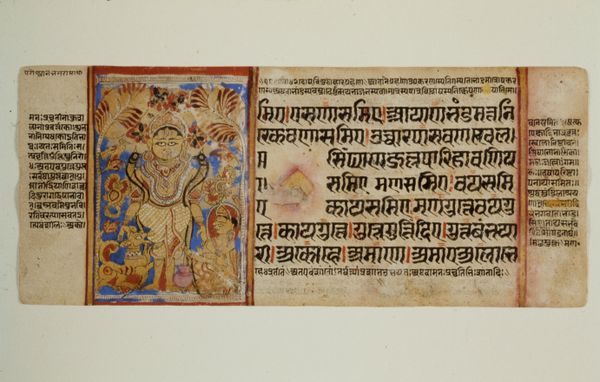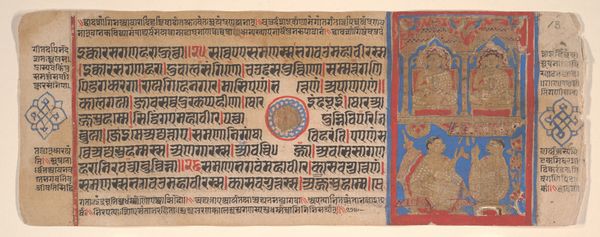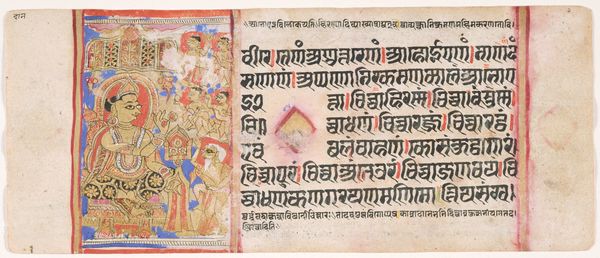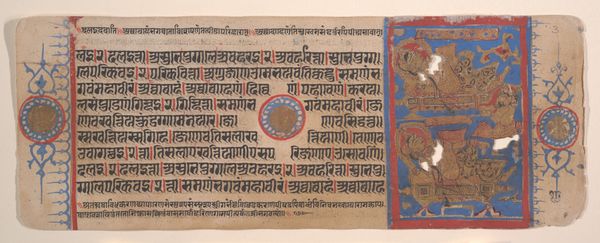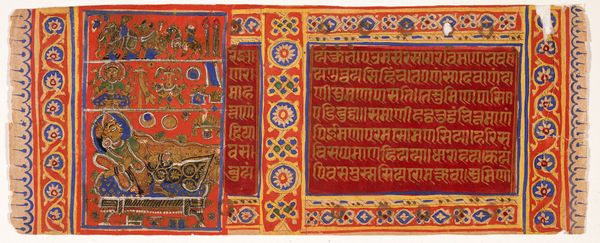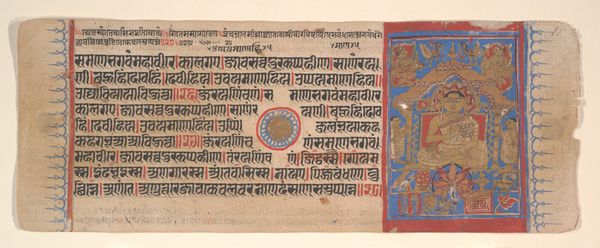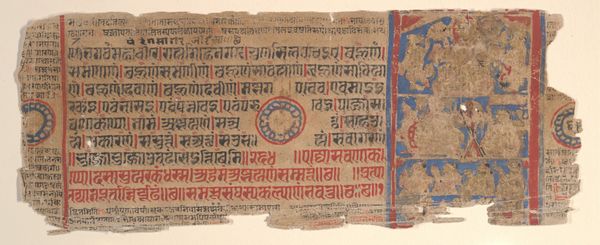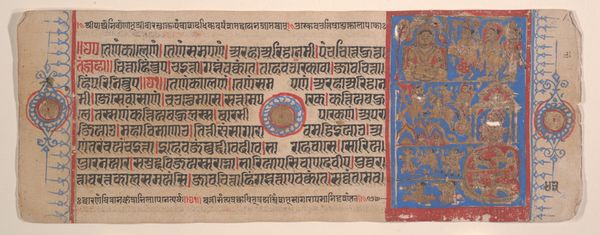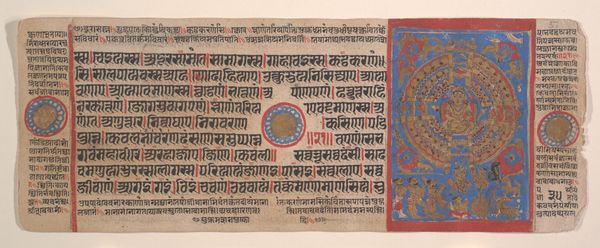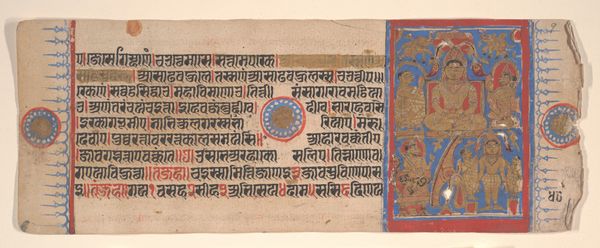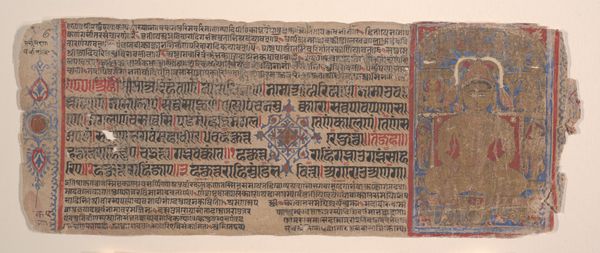
Kalaha Preaches to King Sahr - Mahavira’s Departure with Indra - Adoration of a Tirthankara c. 1500
0:00
0:00
painting, paper, watercolor, ink
#
water colours
#
narrative-art
#
painting
#
asian-art
#
paper
#
watercolor
#
ink
#
coloured pencil
#
islamic-art
#
mixed media
#
miniature
#
watercolor
Dimensions: 4 3/8 x 10 3/8 in. (11.11 x 26.35 cm)
Copyright: Public Domain
Curator: Alright, let's discuss this striking artwork titled "Kalaha Preaches to King Sahr - Mahavira’s Departure with Indra - Adoration of a Tirthankara," dating back to around 1500. It’s currently housed in the Minneapolis Institute of Art and executed with ink, watercolor and coloured pencil on paper. The piece seems to illustrate three narrative sections and the choice to use such vibrant colors creates a world of its own. What are your initial thoughts? Editor: It's the narrative aspect that grabs me most, especially as these miniature paintings often acted as visual anchors for religious texts. How was this piece likely used and what public role might it have played? Curator: That's a crucial point to consider. Manuscript illustrations like this served multiple roles within their socio-cultural context. They weren't merely decorative; they were pedagogical tools, aids for storytelling and vehicles for conveying religious ideologies to a largely non-literate audience. Who was commissioning them and viewing these works also shapes meaning. Knowing the audience affects our understanding. Were they meant for courtly circles or religious orders? Editor: I imagine access would have been limited, perhaps influencing its power all the more. Did these illustrations also legitimize the patron or the religious figures depicted? Curator: Precisely. Art is never neutral. The act of commissioning art, the selection of subject matter, the artistic style itself—all served to reinforce existing power structures or subtly challenge them. This piece subtly promotes Jain ideals by showing important narrative scenes in such refined style. Looking at how these visual narratives intertwine with the textual elements tells us much about art’s persuasive role within its cultural moment. It becomes more than aesthetic. What did you learn from the context that the artwork exists within? Editor: I realize now how easy it is to admire art purely for its beauty while missing the socio-political dialogues it engages in. Viewing this miniature, through a historical lens gives it new depth.
Comments
minneapolisinstituteofart almost 2 years ago
⋮
The Kalpasutra (Book of Ritual) is a major canonical text that provides an extended biography of Mahavira, the founder of Jainism. It is the principal text of the Svetambara Jains, rulers of the Gujarat state in western India and committed art patrons. Because the commissioning of a Jain text for a temple library was deemed an act of religious merit, probably the more closely a copy resembled previous versions, the more ritually "correct" it was thought to be. This accounts for the stylistic unity found in several fifteenth-century Jain manuscripts displayed here.
Join the conversation
Join millions of artists and users on Artera today and experience the ultimate creative platform.
